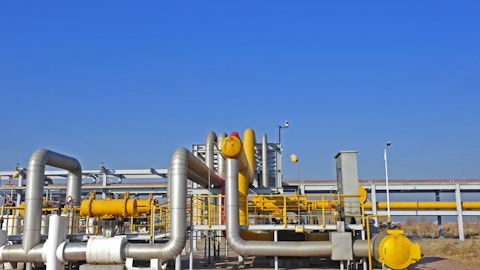Pentair’s Key Risks
PNR’s diversification by product, end market, and geography help protect the company from being decimated by any single macro factor, but the business will always be sensitive to broader trends in global economic growth.
PNR’s exposure to energy (23% of sales) and industrial (25%) markets is hurting its results today. Oil & gas customers are spending less and pushing back hard on pricing, which is compressing PNR’s profits. Unfavorable foreign currency exchange rates are also impacting the company’s growth.
We believe the rest of 2016 will remain challenging, but some of PNR’s other markets are performing better (e.g. food & beverage). Over the long run, we expect the macro environment to revert to the mean.
The greater risk to PNR’s earnings power would be if its products were increasingly commoditized or the company makes a foolish acquisition that endangers the company’s health. We view these risks as being unlikely events.
Dividend Analysis: Pentair
We analyze 25+ years of dividend data and 10+ years of fundamental data to understand the safety and growth prospects of a dividend. PNR’s long-term dividend and fundamental data charts can all be seen by clicking here.
Dividend Safety Score
Our Safety Score answers the question, “Is the current dividend payment safe?” We look at factors such as current and historical EPS and FCF payout ratios, debt levels, free cash flow generation, industry cyclicality, ROIC trends, and more. Scores of 50 are average, 75 or higher is very good, and 25 or lower is considered weak.
PNR’s Dividend Safety Score is 41, indicating its safety is close to average. The company’s dividend has consumed 50% of its earnings and 39% of its free cash flow over its last four quarters, which is reasonably healthy for a macro-sensitive business. PNR’s free cash flow payout ratio has also remained mostly stable around 30% during its last 10 fiscal years, giving us further confidence in the business.

Source: Simply Safe Dividends
As we mentioned earlier, PNR’s business is sensitive to the economy. While the company’s sizable aftermarket sales base reduces some of its volatility, PNR’s revenue still dropped by 20% in 2009, and its stock fell by 31% in 2008. This isn’t the best business to own in the event of a recession.

Source: Simply Safe Dividends
Compared to other high quality industrial companies such as Illinois Tool Works (ITW) and Parker-Hannifin (PH), PNR’s return on invested capital is relatively disappointing. ITW and PH generate returns on capital that are roughly twice as high as PNR’s returns, indicating that they are in more profitable niches and have been superior allocators of capital.
Trian, the activist investor involved with PNR, probably believes PNR is under earning and can improve its returns with the right acquisitions and productivity initiatives.

Source: Simply Safe Dividends
While PNR’s returns on capital are more mediocre than we like to see, its cash flow generation has been excellent. As seen below, PNR has delivered free cash flow in nine of the last 10 years and has more than doubled its annual free cash flow generation over the last decade. Consistently generating free cash flow gives PNR flexibility to pursue acquisitions and sustainably grow its dividend.

Source: Simply Safe Dividends



